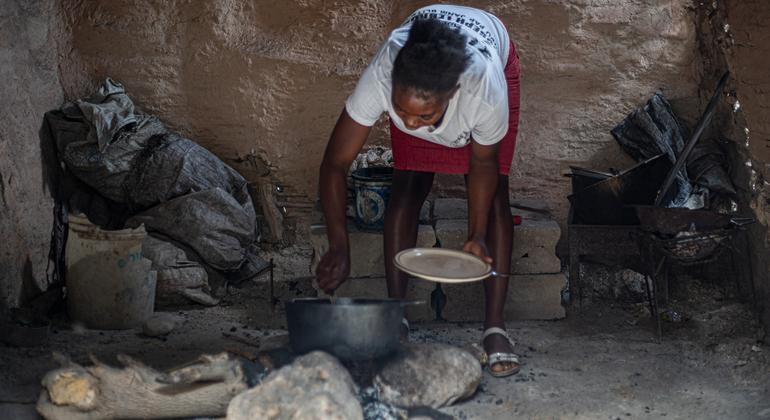Alerting that 4.5 million Haitians are experiencing high levels of acute food insecurity, WFP pointed to lower-than-expected humanitarian food assistance and continued fallout from the last August earthquake as key drivers.
“Hunger levels are rising unabated as persistent political instability, growing inflation and recurrent disasters continue to conspire against the people of Haiti”, the agency advanced.
Briefing the media in Geneva from the Caribbean island nation, WFP Country Director Pierre Honnorat noted the situation is worrisome, “being the worst registered since 2018”.
Severe hunger
“Haiti forms part of a ‘ring of fire’ encircling the globe where climate shocks, conflict, COVID-19, and rising costs are pushing vulnerable communities over the edge”, he said.
According to recent projections, 45 per cent of the population will be in severe hunger from March to June, and of those, more than 1.3 million are estimated to be in the emergency phase of the Integrated Food Security Phase Classification (IPC).
— The Integrated Food Security Phase Classification (@theIPCinfo) March 16, 2022
The ongoing economic crisis in Haiti, characterized by a weakening currency against the US dollar, soaring inflation, and a hike in fuel prices in previous months, has reduced the purchasing power of many poorer households, making basics like food, unaffordable.
Ukraine effect
Furthermore, global food prices are at an all-time high, with the Ukraine crisis continuing to have a direct impact on food security.
UN humanitarians in Haiti warned that it would likely continue to hurt vulnerable people in the highly import-dependent island nation.
Mr. Honnorat reminded that 70 per cent of goods in Haiti’s stores are imported, and said the food insecurity “situation can only worsen if we don’t support Haiti”.
“This is also fueling insecurity, migration and sexual exploitation”, he added, calling for more international support.
“It’s everything about those coping mechanisms that the population has to go for. And it’s different, they have to change their diet, they have to reduce their meals; but it also brings them to violence, it also leads some of them to prostitution”, Mr. Honnorat explained.
Prices rising with inflation
Detailing the situation in Haiti, Patrick David, Senior Programme Manager at the Food and Agriculture Organization (FAO), also briefing from Port-au-Prince, spoke further on the Ukraine crisis’s impact in perpetuating food insecurity.
“Haiti imports lots of food and fertilizers and the increase of prices in these products will contribute even more to inflation, which is already high in the country”, Mr. David said.
Mr. Honnorat added that the wheat that Haiti imports “is mainly coming from Russia and then coming from Canada as well…so if the wheat flour is going up, you will see a problem and the price has already multiplied by five in two years. So, we can only expect that it will multiply again.”
Limited room for optimism
WFP reported an improvement in areas in the south of Haiti, attributed to continued food assistance following last year’s major earthquake.
In its aftermath nearly a million people were left severely food insecure in the affected areas.
The UN emergency food agency has reached more than 355,000 beneficiaries with food and cash assistance worth US$ 8.2 million.
However, it warned the situation has deteriorated in other areas in the south where the emergency response has been limited.

© WFP/Theresa Piorr
Food distribution in one of the most affected communes after heavy flooding in the North of Haiti.
The northern region is also reeling from the aftermath of heavy flooding in late January, which resulted in deaths and injury with nearly 3,500 people seeking refuge in temporary shelters.
WFP distributed dry rations to 8,000 people impacted by the flood, as well as around 1,000 ready-to-eat meals in five days across six shelters.
Emergency response
Looking at long term solutions for a country that continues to struggle with multiple crises, WFP said it is strengthening national social protection and food systems by using rights-based transfers, income generation activities and community-level disaster risk reduction solutions.
To accelerate the return to school and resumption of school feeding activities in the earthquake-affected areas, WFP engineers are also in a race against time to rehabilitate schools.

